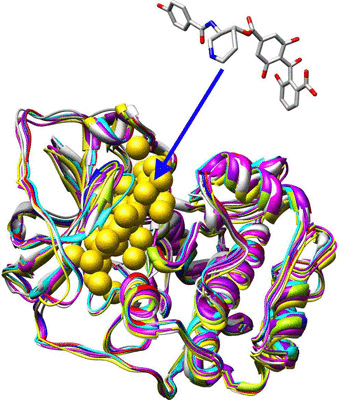About Us
We are developing computational methods to calculate binding free energies for ligand-receptor complexes. The derived energy models are applied to protein-substrate interactions, protein-protein interactions, protein-nucleic acid interactions, and structure-based drug design. We are also developing new docking algorithms to account for protein flexibility. Methods used in our laboratory include computer modeling, simulation and graphics display. Additional application includes modeling of structure-function relationship of membrane proteins.

Research Interests:
Protein-ligand interactions
Protein-protein interactions
Protein-nucleic acid interactions
Computer-aided drug design
Modeling of quantitative structure-function relationships of membrane proteins
The molecular interactions that drive ligand-protein binding are a key to quantitatively understanding the basis of molecular recognition and to designing therapeutic interventions through rational drug design. Drug molecules usually act by binding to specific target proteins. Drug candidates that have high binding affinities can be identified by their geometric and chemical complementarity to the target in a process analogous to solving a "jigsaw puzzle", if the target structure is known. An energy model that can give rapid and accurate evaluation of the molecular interaction strength is thus essential for selecting plausible candidate compounds from a chemical database consisting of hundreds of thousands of molecules.
We are developing novel and efficient algorithms to calculate binding free energies for ligand-receptor complexes. The derived energy models will be applied to protein-substrate interactions, protein-protein interactions, protein-nucleic acid interactions, and structure-based drug design. We are also developing new docking algorithms to account for protein flexibility. Methods used in our laboratory include computer modeling, simulation and graphics display.
A second line of research in the laboratory is quantitative studies on structure-function relationship of membrane proteins. We use our models to provide insights into the molecular mechanisms of the functions of the membrane proteins of interest from structural and energetic analysis, and to facilitate experimental design to identify important protein regions and their functional roles.
